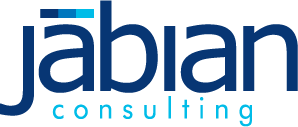People development is one of the most critical factors in shaping an organization’s success. However, organizations face challenges in sustaining and building an organization that adapts to increasingly remote work and dispersed teams. In a world that is increasingly changing, there are key considerations when trying to develop talent, foster collaboration, and develop relationships in a remote working environment:
Developing Talent:
Overall, facilitating training experiences is more challenging in a remote working environment. Instructional designers are limited to computer-based training and virtual, instructor-led-trainings. Both can lack the overall engagement of in-person learning. In addition, much of the relationship-building of a cohort learning model becomes more challenging. One great way to combat this is to focus on building a virtual learning community by adjusting the curriculum to be better suited for remote learning and establishing continuous feedback loops to iterate. While there are many challenges in facilitating virtual learning, there are also benefits. For example, gathering feedback via surveys is much easier, which allows for curriculum iterations. Another recommendation is to focus on mixing large and small group discussions.
EXAMPLE:
One great example of an online virtual learning community is On Deck. On Deck is a virtual-based skill development organization with various programs at the forefront of technology, such as bio-longevity and emerging trends, like No Code Development. The core to the program’s value proposition is figuring out how to attract the right people and pair them together to facilitate a cohort and community learning experience. By combining facilitated speakers, live demos, and small group discussions (e.g., masterminds), On Deck has brought innovation into adult learning. The mixed focus on community, learning-by-doing, and community-driven accountability provides substantial benefits in a virtual world and has enabled On Deck to deliver impactful learning experiences.
Collaboration & Creativity:
In consulting, we often find ourselves crammed into an office space built for one. Despite being packed in like sardines, working together in these cramped spaces with a dry erase whiteboard and marker in hand is where I’ve personally done some of my best work. However, with the increase in remote and dispersed teams, this kind of moment will happen less. For some roles, increased remote work will not impact creativity and collaboration; however, for many, it will. Therefore, it becomes critical to ensure your organization builds long-term processes and leveraging systems that foster teamwork and creativity.
EXAMPLE:
Along with two client team members, I was recently developing training materials to support a technology implementation. Our newly formed group was operating under a tight timeline to deliver a set amount of materials. The tight timeline required us to work in lockstep and creatively deliver training experiences that improved performance. Initially, the team was struggling to stay aligned and synced. However, by establishing daily and dedicated co-working sessions, using a simple visual Kanban board, and leveraging a myriad of digital collaboration tools (e.g., Miro), the team increased our output. These activities also enabled us to work more creatively because we could problem-solve in real-time and brainstorm to develop solutions to potential problems. In the end, our team exceeded our initial goals and delivered a robust set of training materials. The key to our success was establishing a remote collaboration process and leveraging systems that helped us execute that process.
Relationship Development:
When COVID-19 first hit, I found it immensely difficult to develop relationships and build a virtual community. Truthfully, the unknown regarding the pandemic and working remotely was isolating. Furthermore, without organic conversations, you lose out on small talk beneficial to relationship development. However, throughout the pandemic, I was able to find access to communities that might not have been feasible otherwise. With the time saved not needing to commute and increased teleconference solutions, participating in events across the globe became a reality. This coupled with the emergence of community and connectivity applications (e.g., Clubhouse) made connecting with people outside of my immediate area more accessible than ever.
EXAMPLE:
One example is the work done by Janice Robinson, Executive Director at the United Way VIP Program in Atlanta – a leadership and skills-based development program focusing on building the next non-profit board members for the Southeast. When the pandemic hit, the in-person training had to pivot to a virtual-based model. Janice led the program to quickly update all curriculum to be online friendly, incorporating voting, questions, and games to make learning engaging. In addition, the program hosted virtual happy hours and a virtual graduation party. These remote activities enabled the development of lasting relationships that kept true to the culture of the VIP program.
As organizations look ahead, it becomes critical to consider ways to sustain and develop their people. If you are interested in talking about challenges your organization is facing or are interested in the topic of navigated an increasingly remote world – let’s get in touch!
